Foreign policy quandary for Bangladesh: ‘Umbilical’ or ‘geopolitical’?

Bangladesh's foreign inclinations increasingly sway between "umbilical" and "geopolitical" poles, as principles, policies and preferences compete for priority. Their triggers become "umbilical" if, for example, they drove the country's independence (the country's first four principles) or reflect values (joining the Muslim ummah); or embrace "geopolitics" if they rebound off regional/global power contests. Whether "internal" or "external", only with experience can these catalysers thrive. How, then, has Bangladesh jostled between them over 52 years?
Tussling territory: Swaying over the Bay
Even embryonic Bangladesh faced both power rivalry and economic developmental pressures. "Geopolitics" riddled the Bay of Bengal during December 1971, when Task Force 74 (TF74) was redeployed by the US Seventh Fleet to monitor Soviet ships (it was first invoked in 1944 to mobilise what became today's AUKUS group: Australia, the United Kingdom and the United States). Both fleets carried guided and gun destroyers, and included a nuclear-fitted submarine. They were not there because China left the Soviet camp and joined the United States, but today the Bay is monitored in case China's competition with the United States may flare up. Whereas China's Belt Road Initiative (BRI) links Asia with Africa and Europe over land and sea seeking regional integration, trade, and growth, the United States has at least two fronts: the Indo-Pacific Strategy (IPS), targeting peace, stability, and deterrence in a free and open but militarily secured Indo-Pacific, and its Indo-Pacific Economic Forum (IPEF) promoting fair trade but probing security-laden supply-chains, infrastructure, and clean energy and de-carbonisation.
Furious Cold War vibes greeted Bangladesh's birth. From an Atlantic/European platform highlighted by creating the North Atlantic Treaty Organization (NATO) in 1949, the "West's" outward spread produced the South East Asian Treaty Organization (SEATO) and Baghdad Pact in 1955 (the latter becoming the Central Treaty Organization, or CENTO in 1959). Both Indian and Pacific oceans fell within the Seventh Fleet jurisdiction, just as establishing its Indian Ocean base in Diego Garcia complicated Bangladesh's neighbourhood early in the 1970s.
"Eastern" Cold War interests tip-toed the "Western". The Soviet Union's "20-year friendship treaty" with China in April 1950 was institutionalised through the Warsaw Pact in 1955, before being extended to India in August 1971 (compromising India's non-alignment identity). Tensions prevailed on another front. China-Soviet skirmishes over the Ussuri River in 1969 allowed US National Security Advisor Henry Kissinger the opportunity to divide communism. Using "ping-pong" diplomacy from April 1971, this German-born, realpolitik-laced statesman cuddled China so much as to camouflage Bangladesh's plight. Complementing the "carrot" of Soviet "20-year friendship treaties" was a Soviet "stick". This was the Brezhnev Doctrine, formulated to thwart Czech dissidents in 1968, it infamously justified Afghanistan's invasion in 1978. Bangladesh's "umbilical" urgencies (consequences of 1970 cyclone, utter poverty, famine, and war destruction), left it as only a "geopolitics" spectator.
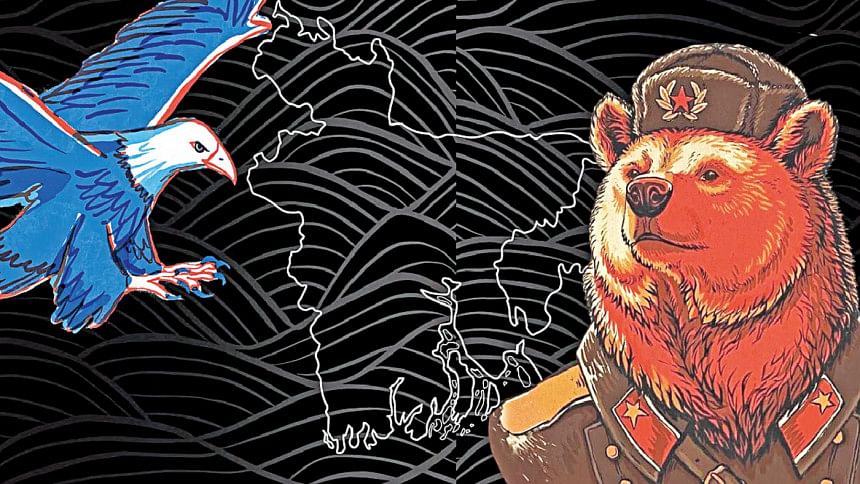
Winds of change
Three change-agents threatened Bangladesh's "umbilical" credentials, that is, the four founding principles (democracy, nationalism, secularity, and socialism, in alphabetical order). The most dramatic of them assassinated Founding Father, Bangabandhu Sheikh Mujibur Rahman in August 1975. A volte farce of loyalty followed: democracy was nipped by 15-odd years of military intervention; nationalism became more rhetorical than functional (for reasons discussed below); secularity was replaced, through Article 2A of the June 1978 constitutional amendment, by an "Islamic republic" (to be restored, alongside Islam, as a constitutional tenet by the Supreme Court in 2010); and socialism was swallowed by two independent and community-based change-agents.
Both change-agents carried multilateral or international dimensions. One was microfinance. Its seeds were sown, not in metropolitans, where modern change-agents typically begin, but across a sprawling countryside supplying four-fifths of both the country's population and export income (through jute). Whereas famine gripped male-dominated farming, women emerged as change-harbingers. Microfinance made them socioeconomic catalysers due to the contributions of Fazle Hasan Abed and Muhammad Yunus.
The other change-agent reflected a World Bank worry independently solved by the General Agreement on Tariffs and Trade (GATT). The worry: how could jute exports of the world's first "basket-case" country be salvaged from plastic? The unwitting solution: the 1974 Multi Fiber Agreement (MFA), a measure helping less developed countries expand RMG (ready-made garment) exports to developed countries by temporarily suspending tariffs. South Korea lost those quotas after acquiring a Newly Industrialising Country status, but to stabilise the economy against rampant petroleum price-hikes and a global recession in the mid-1970s, it had to relocate RMG production to lower-than-low-waged Bangladesh. This began with 130 Desh Garments personnel being trained by Daewoo Corporation under the 1978 Bangladesh-South Korea agreement. It produced Bangladesh's RMG pioneers. Their legendary narratives entered our folklore.
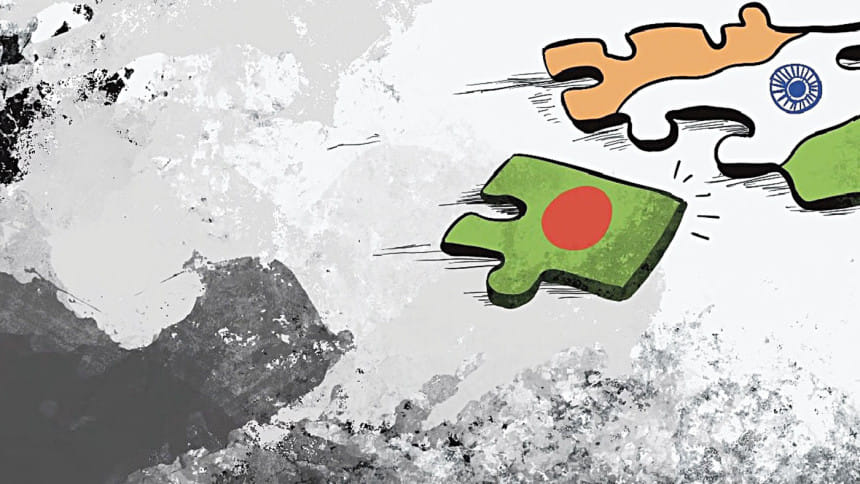
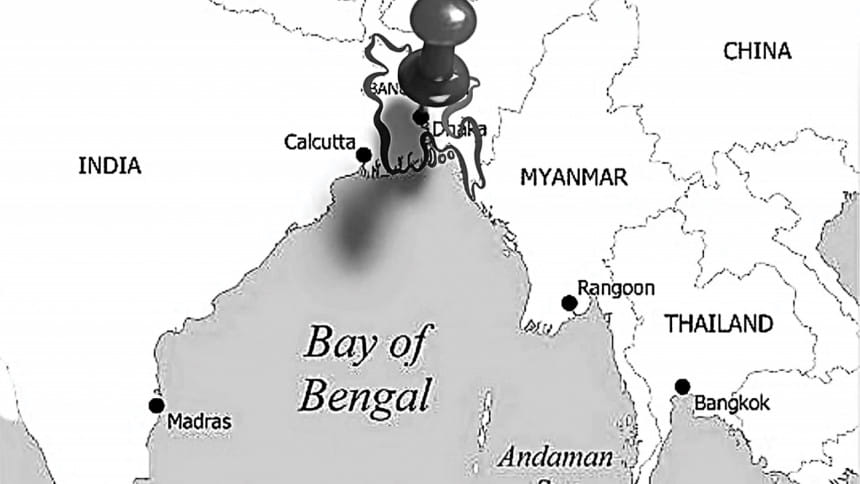
Ripple-effects were huge. From the ground-floor of global economic development, Bangladesh climbed into the top-35 largest economy over as many years, though attracting international attention also meant pecking the brewing China-US rivalry. Similarly, microfinance breakthroughs allowed Bangladesh to produce some of the world's largest non-governmental organisations (NGOs), like BRAC, Grameen Bank, and the Association for Social Advancement, while also turning into a Bangladeshi export, especially to African countries. Spiralling RMG exports still dominate total exports 50-odd years down the line. Even as Bangladesh stood out across South Asia for social reforms and women empowerment, India's pivotal Look East (now Act East) policy orientation gave it an economic push in the Southeast Asian direction. Countries in this region satisfactorily complement Bangladesh's industrial diversification needs. Many of Bangladesh's FTA (free-trade agreements) negotiations today are with them, demonstrating how principles, policies, and preferences, like humans, can and must change with time and tide.
Privatisation, diversification, and democratisation shifted Bangladesh from a "frontier" country into an "emerging market" en route to becoming what the government's Vision 2041 single-mindedly targets: a "developed" country. Yet, as a new Cold War replaces the old, two Bay-based "umbilical" traits fan "geopolitical" flames: China replaced India as Bangladesh's largest trading partner; and the hitherto localised China-India conflict now nurtures strategic tentacles.
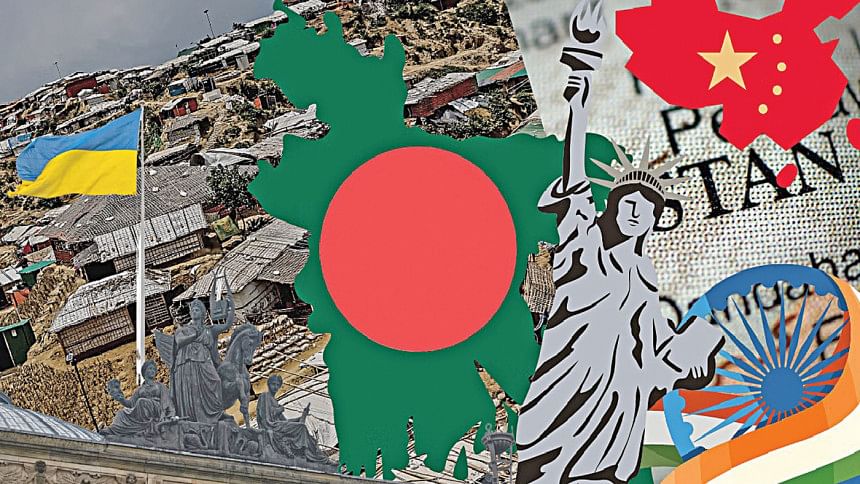
Back to the Bay
Once a quid pro quo consideration in global rivalry during the 1970s, the Bay now demands sine qua non attention, reviving Bangladesh's "geopolitical" ghost. Once the Seventh US Fleet and Soviet ships squared off for only military reasons. Against the slow conversion of an unfolding economic competition into zero-sum military posturing, Chinese and US presence may be asking Bangladesh a million-dollar question: will "geopolitics" tip the "umbilical"? Indeed, can China's BRI alignments and chronologically triggered QUAD/IPS/AUKUS tidal waves be neutered? Complicating matters is the corroding but still infectious World War II Bretton Woods system. It once miraculously revived Atlantic and European areas alone. Can it outdo the China-based, BRI-anchored Asian Infrastructure Investment Bank (AIIB) and the BRICS Plus's New Development Bank (NDB) to uplift African, Asian, and Latin American countries?
Withstanding "geopolitical" thrusts is painful. New threats, like climate-change, demographic reverberations, and relentless migratory/refugee flows, deepen the wounds. With the "West", Far East Asia countries, and Russia fighting demographic dangers, South Asia's corresponding statistics elevate India and Bangladesh. Will the Atlantic area yield to the Indo-Pacific demographically? Indeed, could the Bay of Bengal become a potential military Achilles Heel like the English Channel of the 18th, 19th, and 20th centuries, or the Bosporus during the Cold War, or perhaps how the Gaza War may displace the 20th Century Suez Canal for a new 21st Century Rubicon? Bangladesh could be drawn in by any of the three ignited fissures, between: (a) China and the "West"; (b) BRICS Plus and the "West"; and (c) the global "North" versus the "South"?
Bangladesh's "umbilical" cords (interests/instincts) did not tangle with 1970s "geopolitics". Identifying with the non-alignment movement (NAM) and the Organization of Islamic Countries (OIC) was natural when the 1974 New International Economic Order (NIEO) divided the "North" from the "South" (like the Cold War split the "East" from the "West"). Bangabandhu Sheikh Mujibur Rahman answered that question in the country's maiden UN General Assembly appearance on September 25, 1974 ("friendship to all, malice to none", a passage included as the 14th Paragraph of the UN "International Year of Dialogue as a Guarantor of Peace, 2023" Resolution by 70 countries). As we have learned, fortifying that foreign policy foundation stone produced enormous economic success.
NIEO and UN membership apart, 1974 epitomises other Bangladeshi futures: in the February 1974 Lahore OIC Summit, Pakistan recognised Bangladesh; new Middle East friends were made; and as unofficial migrant-flows became more official, creating the Bureau for Manpower, Employment, and Training in 1976, opening another huge foreign exchange window.
These and stellar microfinance and RMG successes prompted the UN Economic and Social Council (ECOSOC) in 2021 to lift a "basket-case" Bangladesh from "development's" ground-floor into the "developing" bracket from November 2026. Economic genes mapped the country's future, not the military, lessening "geopolitical" thrusts over the "umbilical" against the "geopolitical" instinct of "survival of the fittest". With current military expenditures of just over one percent of its gross domestic product (GDP), and a military force ranked 40th (out of 145 countries) in the Global Firepower (GFP) 2023 Military Strength, Bangladesh hardly qualifies as a "geopolitical" flag-bearer. Yet the GFP's "Powers on the Rise" ranks Bangladesh as high as 12th today. It doubled military personnel in the 1970s, but only because of military rule. Since 2013, in fact, military strength rose in "umbilical" speed, from 220,000 to barely 227,000 today.
"Umbilical" virtues matter most against economic clashes. "Western development", to exemplify, is well known for "aid on strings". Both the United Nations Conference on Trade and Development (UNCTAD) from 1964 and the 1970s NIEO in 1974 emerged to articulate and defuse the "string" effects of US and World Bank aid. Even more recently, the World Bank's refusal to build the Padma Bridge in 2013 exposed contrasting mindsets clashing: "Southern" responses were "umbilical", yet when China took over Padma Bridge construction, "Western" responses took on a "geopolitical" look (any Chinese initiative prompts this). China may claim "string"-free aid, but its interest rates on loans more than double the World Bank's (5 percent v. 2 percent). Pricier economic development invites "geopolitical" fingerprints, then footprints.
In the new Cold War, IPS/IPEC tiptoes China's actions much like the Soviet Union did "Western" moves during the old Cold War. Evolving 2003/2004/2005 tsunami relief efforts meshed with converging regional naval interests to produce the Quadrilateral Dialogue in 2007. Japan's Prime Minister Shinto Abe launched it. This was given a cultural bent when the September 2021 AUKUS Pact entwined Anglo-Saxon countries "geopolitically". Port-building construction in the Bay could inflame those simmering Indo-Pacific policies. India is building Sittwe in Myanmar; Japan Yangon in Myanmar and Matarbari in Bangladesh; and China's BRI's in Kyaukpyu, Myanmar; and Sonadip and Payra, Bangladesh. Sheikh Hasina visited Washington in May 2023 to celebrate 50-years of World Bank partnership, in essence recalling the World Bank to push the Vision 2041 road to a "developed country" (and thereby diversifying the RMG industry). US entry only thickens the "geopolitical" flavour.
Collective action is key. "Umbilical" loyalties promise more, with greater security, stability, and predictability. On the other hand, "geopolitics" is costlier, but perceptual gains obscure them.
Bangladesh's half-century experiences resemble human life. As a child or adolescent, "umbilical" links steadied the feet and bestowed identity; but a still unfinished adulthood attracts adventures driven by "geopolitical" seduction or necessity. How these evolve and the depth they plunge to depend upon how viable collective youthful actions remain during adulthood.
That is one part of the jigsaw. Another involves network intricacies. Whether Bangladesh should join the Regional Comprehensive Economic Partnership or not, for instance, may ultimately be answered in relative terms, that is, by how strong the relationship with one or more of the following may be at any given point: Act East, BRICS, NAM, NIEO, and so forth.
Sturdier "umbilical" linkages soften "geopolitical" plunges, while profitable "geopolitical" links further strengthen "umbilical" loyalties. Navigating adroitly between these inevitable but varied foreign policy directions rests upon how skilfully we juggle our "umbilical" ideals and "geopolitical" realpolitik.

 For all latest news, follow The Daily Star's Google News channel.
For all latest news, follow The Daily Star's Google News channel. 


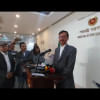


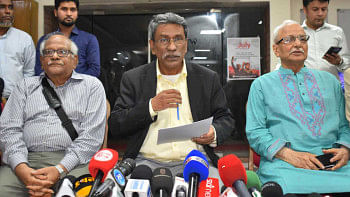
Comments